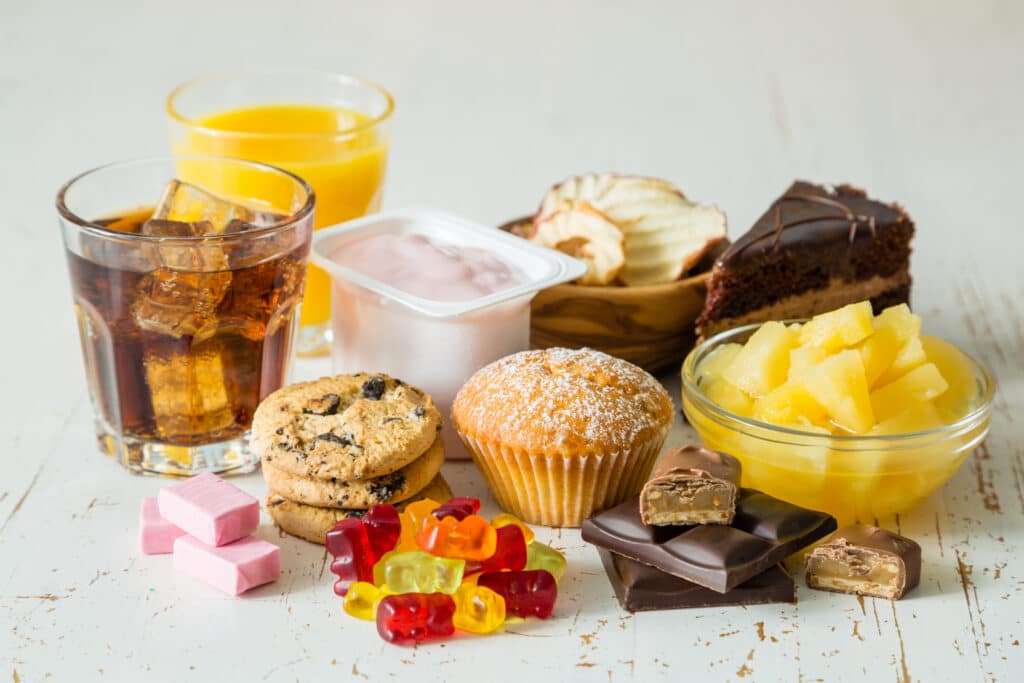Ultra-processed foods are food products that are heavily processed before reaching supermarket shelves. These types of foods usually contain lots of chemicals such as preservatives, sweeteners, food colouring and emulsifiers. Generally, the more a product has been altered from its original form, the more likely it is to be ultra-processed

Ultra-processed foods are usually of low nutritional quality with high levels of sugar and salt. The benefit of ultra processed foods is that they typically taste good and have a long shelf life, but if eaten in excess can contribute to health issues.
It’s tough to completely avoid ultra-processed foods, and some are worse than others. For example, processed wholegrain bread has more nutritional value a fizzy drink. The key is having a balanced diet with lots of fruits, vegetables, lean meat, nuts and seeds.
Examples of ultra-processed foods
Ready meals
Ice cream
Fast food items
Processed meats – sausages, hot dogs
Some breakfast cereals
Crisps, biscuits
Sugary drinks
Examples of unprocessed foods
Fruit, vegetables, milk, eggs, meat, seeds and nuts that have no added ingredients.
Examples of processed foods
These are foods that could be made at home, such as jam, homemade bread, cheese and tinned fruit.
How can to tell if a food item is ultra-processed
Check the ingredients
Ultra-processed foods usually have a long list of ingredients, including additives, preservatives, artificial colours, flavours and sweeteners. These are generally foods you couldn’t make at home.
Check for heavily refined ingredients such as oils, flours and sugars.
Look at the nutritional value
Ultra-processed foods often have high levels of sugar, salt and unhealthy fats.
Find out more
Buy a selection of foods, or search the ingredients online and create a table of processed and unprocessed foods. One idea is to choose a food type, such as bread, and try to find five ultra-processed and five less-processed types.
Discover how ultra processed food may affect the brain with this article from the BBC.
Watch The Science Behind Food That Isn’t Food.
Last Updated on March 7, 2024 by Emma Vanstone


